Cate Blanchett attended the second day of International Film Festival Rotterdam on Saturday. She first participated in a moderated talk they formally launched Displacement Film Fund, then introduced RUMOURS followed by a talk with Guy Maddin, the short film Bozo Over Roses by Matthew Sidle also premiere, you can watch an official clip below.
Todd Field’s TÁR will be screen at Barbican Centre on 21 March, 5pm as part of London Soundtrack Festival 2025, Cate and composer Hildur Guðnadóttir will introduce the film. Tickets goes on sale here:
- Wed 5 Feb, 10am – LSF subscribers & Barbican members priority
- Thu 6 Feb, 10am – general sale
Displacement Film Fund
For filmmakers interested in submitting their short films, you can go to IFFR.com for more information and further announcements.
Cate Blanchett has shed more light on the Displacement Film Fund, a new €500,000 short film grant scheme to support refugee filmmakers to tell their stories.
Blanchett is chairing the selection committee of the Fund which was officially launched in collaboration with the Hubert Bals Film Fund at the Rotterdam Film Festival (IFFR) on Saturday (February 1). It offers up to five individual grants of €100,000 for up to five displaced filmmakers, or filmmakers with a track record in creating authentic storytelling on the experiences of displaced people.
IFFR managing director Clare Stewart described Blanchett, who is a goodwill ambassador for the UN’s refugee agency UNHCR, as “the driving force” behind the initiative.
Speaking at IFFR, Blanchett noted that the number of displaced people worldwide is now around 120 million, the same as the population of Japan. “I find it bewildering, I think we all do, about how vast and urgent this situation is. Yet these stories don’t seem to be getting into the mainstream.” Blanchett said the “very human” reality of displacement has been “politicised and made toxic and somehow been kept off our screens.”
One of the main reasons that the fund is backing short films is that they allow displaced filmmakers to bring their projects to screen relatively quickly compared to features. Blanchett also said shorts “can have a social impact that then can be expanded into being something else.”
Blanchett said the challenges facing the wider film industry gave added relevance to the fund. “We’re releasing this fund at a really turbulent and potentially exciting time when audiences are hungry for consuming story in many different ways. Also, the industry is, in a lot of ways, in free fall, and that’s an opportunity to reforge itself into something more exciting as well.”
Blanchett added: “Oftentimes a feature film can get into quite a conservative formulae. When you start talking about more money, then there’s more pressure on it to be a certain thing. Often the dreaded three act structure can squeeze all the creativity, vitality, adventurousness and ground breaking quality out of a feature whereas a short… is actually a place where [a filmmaker] can truly experiment. The audience member is also thinking, “You’re not asking a lot of my time necessarily. I’m prepared to go with you in places I may not otherwise in a feature film.”
Official launch
Blanchett appeared on a panel at IFFR to launch the fund alongside Koji Yanai (Perfect Days), Waad Al Kateab (For Sama), Jonas Rasmussen (Flee) and HBF head Tamara Tatishvili.
Tatishvili said the Displacement Fund builds on the legacy of HBF’s in supporting filmmakers from countries where production infrastructure is lacking or the freedom of expression is really hindered.
She said it would run as a pilot in its first year. “We are very pragmatic and realistic partners here. We know that when we set up a new structure, we need to also learn from it – and there will be learnings and outcomes that will help us to move this fund into a legacy fund.”
The Displacement Film Fund was first initiated and developed at UNHCR’s Global Refugee Forum by Blanchett and fellow UNHCR supporters Ke Huy Quan (Everything Everywhere All At Once), and his wife Echo Quan, healthcare exec Ayman Tamer, Koji Yanai (Perfect Days), and investor Isaac Kwaku Fokuo.
Blanchett recalled: “We were talking about how refugees, asylum seekers and people who are displaced often feel invisible, and how could we make their stories more visible…You don’t stop becoming a filmmaker just because you’re displaced. Yet your stories and your career are put on hold.”
More on ScreenDaily
Actress-producer Cate Blanchett spoke about how the newly-announced Displacement Film Fund will support displaced filmmakers and those working on stories about displaced people at a panel held at the International Film Festival Rotterdam (IFFR) on Saturday.
Blanchett appeared alongside Oscar-nominated filmmakers including Perfect Days producer Koji Yanai, For Sama director Waad Al-Kateab and Flee director Jonas Rasmussen, as well as Hubert Bals Fund head Tamara Tatishvili.
“I do think that we’re releasing this fund in a really turbulent time when audiences are hungry to consume stories in many different ways,” said Blanchett. “The industry, in a lot of ways, is in free fall and that’s an opportunity to reforge itself into something more exciting.”
Bestowing up to five individual production grants of €100,000 (approximately US$104,200), the Displacement Film Fund was established to champion and fund the work of displaced filmmakers, or filmmakers with a proven track record in creating authentic storytelling on the experiences of displaced people.
Blanchett emphasized how the fund will approach projects with an open mind and let the filmmakers’ voices shine through.
“We don’t have to lecture people because the displaced people I sat with have not been lecturing me — they have been sharing points of common humanity. That has always surprised and moved me and has really altered the cause of my life,” added Blanchett.
Blanchett will head the selection committee for the fund, which also includes Al-Kateab, Rasmussen, Cynthia Erivo, Agnieszka Holland, IFFR’s Vanja Kaludjercic, Aisha Khurram and Amin Nawabi, among others.
Blanchett shared that watching His House by Remi Weekes on Netflix was a film about refugees that she has been particularly inspired by.
“It was one of the most terrifying horror films that had at its core this Sudanese couple who was being resettled in the north of England and they were being haunted by a sort of witch-like presence,” said Blanchett. “It invited me into a cultural haunting, but through through the lens of the horror genre and it was so memorable and absolutely terrifying. I wasn’t being taught a lesson about Sudanese culture, but the culture was still totally alive, and I went and explored that at 4am in the morning when I couldn’t sleep. It breaks apart common conceptions of what displacement is.”
In the case of the Displacement Film Fund’s pilot version, filmmakers will be making short films. Blanchett highlighted the importance of working in the short film format for the fund’s recipients, especially given the creative freedom that it affords.
“Oftentimes, a feature film can get quite conservative and formulaic,” said Blanchett. “When you start talking about more money, then there’s more pressure on the film to be a certain thing. And often, the three-act structure — the dreaded three-act structure — can squeeze all the creativity, vitality, adventurousness and ground-breaking potential out of a feature, whereas a lot of established filmmakers that I’ve spoken to, they say that a short film is actually a place where they can truly experiment.”
“They can take a risk, because an audience member is also thinking, ‘well, you’re not asking a lot of my time necessarily, so I’m prepared to go with you in places I may not otherwise with a feature film,’” added Blanchett.
Tatishvili spoke on the importance on shaping the fund through this pilot version, before transitioning into a long-term legacy fund that will have an open application.
“We all have one clear mission — that this is a long game,” said Tatishvili. “But for that to be achieved, we thought that it would be very important that we acknowledge the pilot and know that this is something which we are using to engage more partners and creating afterwards a legacy plan, hopefully with an open selection and application process.”
Full article on Deadline
Talking about the newly launched Displacement Film Fund at the International Film Festival Rotterdam on Saturday, Cate Blanchett teased: “It’s the beginning of something wonderful.”
“I don’t think it has anything to do with me, but with the urgency of the situation. And yet these stories don’t seem to be getting into the mainstream. These very human stories have been politicized and made toxic. I’ve been a UNHCR Goodwill Ambassador for almost 10 years now, meeting refugees, asylum seekers and displaced people, and hearing their stories. Their lived-in experience has been inspirational to me. Their resilience, courage, their fortitude. Their stories beggar belief.”
As she noted during a panel at the festival, within that period of time, the number of refugees and the displaced has grown exponentially. And yet people who experience it “often feel invisible.”
“There is a stigma around being a refugee. What happens to their careers and perspectives? We don’t want to ghettoize their stories but help them reach the mainstream. The speed with which this initiative has been put together speaks to the desire to engage. The audiences are interested in their stories, and they’re not always given a chance to connect.”
Tamara Tatishvili, head of Hubert Bals Fund, explained that “the vision is to start operating on a pilot scale.” Up to five short films will be financed. A nominating committee will create a list and the selection committee will then take a look into creative concepts of the filmmakers.”
“These films will premiere at IFFR next year,” she said. “We want to amplify these short films as much as possible and unlock access to places for distribution, for circulation, which might not be a traditional landing for these kinds of projects.”
She added: “We will get our hands dirty with it and try to bring it to the next stage. That’s how you innovate.”
They also explained why they decided to focus on short form.
The decision to focus on short film form had to do with creativity, she said. “On this fast-tracked collaboration, we have a clear mission: This is a long game. We want to create a legacy fund. We’ve met a lot of experienced filmmakers who don’t want to be in financing for years – they want to unleash their creativity.”
Blanchett agreed: “We are releasing this fund in a turbulent and potentially exciting time. The audience is hungry for consuming stories in many different ways. The industry, in a lot of ways, is in a freefall, so it’s an opportunity to turn it into something more exciting.” Oftentimes, a feature film becomes “conservative and formulaic,” also because of “that dreaded three-act structure,” threatening its original elements.
“Filmmakers think: ‘A short is a place where I can truly experiment and take risks.’ It’s a dynamic, elastic space. Being a woman in the film industry is not a monolithic experience and nor is being displaced. The amount of belly laughs I’ve had speaking to people in very deprived and challenging environments, the amount of ‘Babette’s Feast’ moments I had with displaced people has been astonishing. Whether it’s a genre film, a documentary or romantic comedy, we don’t have to ‘lecture’ people, because they haven’t been lecturing me either. They have been sharing points of common humanity.”
Syrian filmmaker Waad Al-Kateab, behind “For Sama,” made the film while being displaced herself.
“When Cate mentioned this project to me, I was over the moon. I remembered everything I have been through. It’s urgent, more than ever: Not just for us as a community of refugees but for the world. Everyone can look around and see where this is going, and it’s definitely not getting better. When I made ‘For Sama,’ the first challenge was: ‘No one wants to hear his.’ But it was survival. I wanted to live and accept what happened in telling this story.”
The fund is “really going to make so much difference” for people whose stories would otherwise never be told, she noted. “It’s going to change their lives.”
Blanchett added: “In the DNA of the initiative is that it’s respecting and understanding that if you are displaced, no matter if you are a filmmaker or not, the thing you are robbed of is your freedom. You don’t have the freedom to think, to dream or to return home. We want to safeguard a little island of creative freedom for these extraordinary artists. It’s a start.”
Full article on Variety
Rumours IFFR Premiere and The Big Talk with Cate Blanchett & Guy Maddin
Google translated from Dutch to English
Makers on the run
But the versatile actress, as sublime as the elf queen ( Lord of the Rings ) or the transgressive top conductor ( Tár ), is also in Rotterdam for the announcement of a new initiative that should give filmmakers on the run the opportunity to make short films. The Displacement Film Fund, which will annually award five of them a grant of 100 thousand euros, is made possible in part by the Hubert Bals Fund, which is affiliated with IFFR, and the refugee organization UNHCR, for which Blanchett has been a ‘goodwill’ ambassador for ten years. These refugees often feel ‘invisible’, the actress states at the official launch at the Rotterdam festival. ‘Their stories do not seem to reach the general public.’
Maddin also came along to Rotterdam, where he and Blanchett updated the audience on the how and why behind their first collaboration. ‘It was like the mating ritual of the reed warbler’ (the best singer among the reed birds, ed. ), says the filmmaker. ‘We first fluttered a bit between the reed cigars, making strange sounds in each other’s direction… you tell the rest.’
Polite stalking
Blanchett: ‘Sometimes, when you’ve had no work or you’ve had no work for a while, your agent will say, make a list of directors you’d like to work with. And Guy was always on it. I think I started stalking him politely, between those cane cigars.’ There was also the film the actress recorded for The Criterion Channel, which invites the world’s most renowned filmmakers to choose a few titles from the richly stocked cabinet of the quality film label, which releases new copies of old and new classics. Blanchett chose, among others, a work by Maddin. The director: ‘When I saw that, I had to cheer.’
More on de Volkskrant
Actress-producer Cate Blanchett and director Guy Maddin shared about their paths into the film industry as well as their experiences of “flow” in making art, while at the International Film Festival Rotterdam (IFFR). They took the stage in front of more than 800 guests at the Oude Luxor Theater, shortly after a festival screening of their film Rumours.
“I never, ever thought I could work in the film industry,” said Blanchett. “I was resigned happily to having a career in the theater. I didn’t think that I was that girl, and at the time, there was certainly a sense that women had a certain shelf life in the film industry, and a certain type of woman got to parade on screen. But I loved watching films, and I had such an eclectic taste. I think it’s the benefit of growing up with four Australian terrestrial channels.”
The two-time Oscar-winner said that it was a film excursion for a French class in high school that first made her think about pursuing film.
“I was hypnotized by the cinematic storytelling, and it felt like quite an adult experience. Our teacher treated us like adults. She talked about cinema in a certain way that made me think, although I think I’ve learned more about cinema than I did French, unfortunately, from that teacher,” said Blanchett.
She also cited the work of Jane Campion as a huge inspiration for her.
Maddin shared about his initial ambition to become a writer, some of his misadventures in attempting acting and how both the death of his father — and becoming a father himself — nudged him toward a career in filmmaking. Among some of his films are My Winnipeg, The Saddest Music in the World and The Green Fog.
“I fancied in my early twenties being a writer, but I was a good enough reader to know I could never be a good enough writer that I would want to read,” said Maddin. “I wrote, but then I discovered these kind of primitively human movies that really moved me.”
Maddin highlighted Eraserhead as a formative film in defining for him what cinema could be — in both a professional and personal way.
“Eraserhead was a real eye opener — rest in peace, David. I couldn’t sleep after seeing it, not just because of the incredible vibrations I took home with me from the sound design and the shocking images, but I couldn’t believe that David Lynch had made a movie about me 10 years earlier,” said Maddin.
Maddin shared that he also drew inspiration from Greek tragedies in his work — singling out “Electra” by Euripides as one that left a particularly sharp impression on him.
“I just started reading Greek tragedies, because those things have been entrenched for 2500 years. There’s got to be something I can steal,” said Maddin.
Launching off Maddin’s point about drawing from existing work or “stealing”, Blanchett said that she wants artists to reconsider what it means to “be original.”
“We’re told as developing artists that somehow you have to find your own voice, whereas I will beg, borrow or steal from anyone and anything,” said Blanchett. “I think partly it’s a homage, but also partly it’s a way to connect with someone, through recognition of a frame, trope or a star. If somehow you’re in dialogue with that filmmaker, actor or that cinematographer, sometimes that reference will be recognizable, or you might end up throwing it out somewhere else. But I think it’s often in trying to replicate, in a strange way that you find something unique.”
Maddin shared that he calls the state of flow he sometimes feels in making art a kind of “narcotic tingle,” referring to some of Russian-American writer Vladimir Nabokov’s writings in this line of thought.
“I know that in some of the experiences that I’ve had as a filmmaker, sometimes art produces those tingles for example, a certain few shots in a row, or when the music actually matches an image. Or even before I was interested in film, when I played team sports, sometimes it was just a great feeling that you had,” said Maddin.
However, Blanchett said that for her, it has worked better for her growth as an artist when she learned to let such feelings go.
“I’d never dwell on that feeling. You have to let it go,” said Blanchett. “It’s like a love affair. It’s sort of like, ‘Oh, that was amazing.’ And then it’s out the door, and I think you learn a lot more from your embarrassing failures when you do that. You have to be so grateful that you’ve had that experience of flow.”
Full article on Deadline
Cate Blanchett “never, ever” thought she “could work in the film industry.”
“I was resigned, happily, to a career in theater. I didn’t think I was that girl. There was a sense women had a certain ‘shelf life’ in the film industry and a certain type of women got to parade on the screen and others didn’t,” she said at the Rotterdam Film Festival Saturday.
Watching Visconti’s “The Stranger” awakened her love for the cinema.
“Our French teacher took us to see it. I learnt more about cinema than I did about French. I don’t think I’ve seen it since, but I was hypnotized by the cinematic storytelling. Also, we grew up in such an incredible moment in Australian cinema-making. I remember watching ‘Picnic at Hanging Rock,’ ‘Sweetie,’ ‘An Angel at My Table.’ I thought: ‘Maybe I will be able to step into that frame’.”
The Oscar-winning star caused quite a frenzy at the festival on Saturday, with ticket holders fighting to secure a good spot in the never-ending queue. Earlier that day, Blanchett also championed the new Displacement Film Fund at the fest, established to champion displaced filmmakers.
Talking about films, she admitted to having an “eclectic” taste. “I used to watch a lot of horror. Since I had children, I can’t do that at all. I love my kids, but I’m sad about that.”
She also opened up about “Rumours,” joined on the stage by Canadian filmmaker Guy Maddin.
“I thought I was going to your garage in Winnipeg, I packed for that, and then we were in the forest in Budapest.”
The film, directed by Maddin, Evan Johnson and Galen Johnson, was described by Variety as a “wildly entertaining shaggy-dog satire that sees a stuffy G7 summit devolve into a murky, muddy and strangely isolated zombie apocalypse.” It premiered at Cannes.
“We would often watch YouTube clips of the G7 summit, for some reason. There is a way that politicians on the global stage walk and gesture that just isn’t natural. It’s world-leader acting, a weird, silent movie pantomime. We had to cut out my favorite part when Macron has two cell phones, and checks texts on them both at the same time,” recalled Maddin, recalling he briefly considered scoring it “entirely with national anthems.”
“I was excited to talk to you and we talked for 61 minutes. We didn’t really speak about the project at all. I remember the first 60 minutes being very exciting. I was scared to bring up the movie and at the last minute, you said: ‘Let’s do it’.”
“Someone had to,” laughed Blanchett – but she was a fan even before that.
“This was the one where it all came together for me,” she said about Maddin’s “My Winnipeg.” “It’s beautiful, so full of longing, so melancholic. And so funny! It feels incredibly strange and familiar.”
“I am driven by self-pity,” deadpanned Maddin, also sharing his favorites.
“I’ll pretend I’m in the Criterion Closet. I’m a terrible actor. I was in a scene once with Laura Dern, Diane Kruger and Kristen Stewart, and the scene was cut from a movie. Oh, ‘Notes on a Scandal,’ it’s amazing, Cate has an affair with a high school student and Judi Dench gets really jealous. I love it, into the bag. ‘Tár,’ of course. Cate was robbed at the Oscars! What’s this, ‘Manifesto’? She plays a dozen characters, it’s unbelievable. And that’s a boxset of her plays! Thank God. And another boxset of ‘Documentary Now!’ – Cate is in two of my favorite ones. She does an unbelievably stunning Marina Abramovic.”
No stranger to the fest, Maddin was already a subject of a retrospective at IFFR back in 2003.
“‘Eraserhead’ was a real eye-opener. Rest in peace, David. I couldn’t sleep at night. I couldn’t believe David made a movie about me,” he said. He was “emboldened” by Lynch and Buñuel’s work. “I could never be a writer, but [I thought that] maybe I could make films,” he said about his first inspirations.
Blanchett shared that she “loved the ritual” of playing a VHS. “There was something about knowing it was a lightly delicate object. I also loved how it degraded. It just made me watch it differently. But my most watched VHS was ‘Jane Fonda’s Workout’.”
“We are told you have to find your own voice. I would say: Steal from anyone. It’s an homage and a way of connecting through recognition. You are in dialogue with that filmmaker, actor or cinematographer. And that reference, filtered through your own experience, will be unrecognizable. This obsession with being ‘original’ or breaking new ground can often be a trap,” she noted, also confessing she “learns more from her failures.” Still, the festival spotlighted her many successes with a clip celebrating her work.
“I just shit my pants. Why did you work with me?! God,” said Maddin afterwards, visibly impressed. Also claiming that she “kicked Timothée Chalamet’s ass” as Bob Dylan in “I’m Not There.”
“I am far more comfortable with people coming up to me, saying: ‘I am sorry I haven’t seen your movie yet.’”
Full article on Variety
Bozo Over Roses
Harsh brutalist architecture and oh-so-soft athleisure wear, ecstatic platitudes about consumer goods and bizarre one-liners, Bozo Over Roses plays out like a terrifying cult that nobody wants but that we all deserve. A dystopian transmission from a future humanity brought to the brink of extinction through endless streaming and next day shipping.
– Cristina Kolozsváry-Kiss of IFFR
There is surely nothing finer than seeing one of the world’s greatest actors of stage and screen parlaying her energies into roles that sit cleanly outside of the mainstream comfort zone. And so it is with Matty Sidle’s mischievous short work, Bozo Over Roses, in which Cate Blanchett stars as part of an ensemble of what appears to be a freak-fried Benetton ad that’s been beamed back from a not-so-bright future.
Sidle was thrown together with Blanchett on the set of 2024’s Borderlands, connected by the enthusiasms of her son Dash who was assisting Sidle in his work as a videographer. Shot on location in the rural wilds of suburban Budapest, the film comprises surreal agit-prop declamations and warped wordplay, with Blanchett as a trackie-sporting godhead whose body contorts amid the layers of post-production glitchwork. It’s a film which dismantles and reconstructs language, but also subtly satirises the uncanny aesthetic and counterintuitive “thought” processes of generative AI. LWLies met the pair at the 2025 Rotterdam Film Festival.
LWLies: I’ve read a little bit about how the project was conceived, but I’d love to know a bit more detail on how all the dots ended up connecting.
Sidle: I found an old notebook of mine that had a lot of jokes in it; strange, surrealist little writings that I had done. I thought there would be potential for these little experiments, where friends and family would read out the words and get into the rhythms of the dialogue. Later I started to find all these dystopian locations in Los Angeles that I got into. And then I got more and more into it and ended up creating this weird language.
I was fortunate enough to be on a project with Cate and her son, Dash, and they saw some of my footage and they just got into it. We shot a little bit more and did some voice recording. And then just started to shape a lot of it, almost like a documentary. I had so much content and found much of the film in the editing. We just tried out a lot of different character ideas and dialects and put things together in different sections. And then it was pretty much just a fun voice recording session.
I understand you were watching lots of examples of actual people’s voices and people talking, like famous actors from classic Hollywood.
Sidle: Yeah, definitely. I love old Hollywood films. I’m really into Elaine May, Frank Capra films, things like that. And we just had fun using those as touchstones and starting points for some of the dialogue and characters that we developed.
Blanchett: “Characters” in inverted comments.
Why do you say that? Do you see your sort of persona in this film as not necessarily a character in the strict dramatic sense?
Blanchett: It was almost like the words were psychology neutral. There was no… the character hovers above itself. There was the body that was filmed. And then the notion of character was really just like pixie dust across the frame. The way you were treating the text was really fluid and spontaneous. I mean, obviously it had been percolating for a long time, but you would often throw it in silent movie style, you know, as if it were just occurring to you.
Sidle: Yeah, definitely.
Blanchett: You were channeling these things from some other realm.
Sidle: There was certainly a little bit of discovery during the sessions as well. Like in the first half of it was more like my friends and family. A lot of the dialogue and the character are done even by the same person. It’s a little more like this outrageous kind of Fellini approach. Then with Cate’s sequences, a lot of it was all your voices.
Blanchett: I found that really interesting in the way you were going to treat the voice and flip the frame. Because I’ve always been… you know that Laurie Anderson documentary I loved about the face [the 1991 BBC Arena documentary, The Human Face]. And she does that thing where she flips it both ways and mirrors it. You’ve got a family association rather than it being the same person. The likeness is really played with. But I didn’t remotely try to make any sort of logical sense out of what we were doing. I think it was much more free association.
Sidle: Yes, definitely.
Blanchett: And it’s wildly and apologetically that, which I really love.
In an instance like this where you’re having your features and body kind of manipulated in post-production by someone else…
Blanchett: Welcome to the Marvel Universe!
Well, indeed! But what say are you having in that? Are there lines that can’t be crossed or are you kind of giving your body and features over to the project?
Blanchett: Body and soul. Well, no, Matty, you’d shown me little tasters of the tone and approach, so I knew what the world would look and feel like. I think that always helps when you’re entering the frame. You have to know what the boundaries are, or indeed if there are any boundaries, and what might happen in post. That really helps because then you don’t embellish or you start curating your gestures according to the things that you shot. Because this has been, as I said, percolating for a really long time. So yes, I wasn’t flying blind. But the location that you and Dash found in Budapest was amazing. It was so perfect. As soon as they entered into that space and the light was quite harsh and the shadows were very intense, it just became quite theatrical in the sense. There was a proscenium if you stood at a certain point, and it gives the film this unique resonance. Downstage left is different to upstage right or center stage. And so those old school dramatic principles suddenly came very much into play. And I guess you’ve got the brutalism as well.
Brutalism is very in at the moment.
Sidle: Ha ha, yes! And there’s an intermission in my piece too. I wonder who got there first?
Yeah, lawyer up, Brady.
Sidle: I think my whole film could fit in his intermission. There’s an idea…
I have a young daughter who’s in the process of learning to read. And the process by which she’s learning is called phonics. It’s learning via repetition of sounds like they say, “cup of tea by the sea”. And it was really moving to see you using that very primal, primitive way of learning language in the writing.
Sidle: That is interesting. Yeah, well a lot of it was based on my daughter’s lingo. And some of the lines are interpretations of what she said. Some of the things you overhear and people say things on set, or in the market or somewhere like that. Or like an old movie, I might flip it. Like a line from an old Preston Sturges film. I’ll give it a little bit of a twist and build on top of it. But there was no real super focus on how to go about it. Somebody else thought it might be based on the ‘Oulipo’, the French word play exercises that you can do.
What was it like, Cate, to intone those words and try to capture what the writing was attempting to transmit?
Blanchett: I think it was about finding the right resonance for them. But it was incredibly playful. I felt very at peace.
Would you ever do something like that in rehearsal? Like doing games and limbering up exercises before a scene?
Blanchett: Yeah, I’m working with Thomas Ostermeier [on a production of Chekov’s ‘The Seagull’ with Tom Burke] at the moment and we all warm up every day. It’s not dissimilar to what we did on this. But I think there’s a really strong hypnotic quality to it. So I hypnotized or possessed myself while we were shooting.
Sidle: It went pretty fast. It was like we did it all in about an hour. Did we not?
Blanchett: No, no… I think you might have been in the zone. I think it went on a bit longer than that. But it’s interesting you talking about reading those things into it. I think sometimes when a film is so specific, it can actually speak to a wider universal experience. It’s a strange thing because it’s so particular the film you’ve made.
Sidle: Yeah, I felt like there’s… some desperate longings in it. When I listened to it in the end, I started to figure out what it was after it was done, figuring out if somebody thought they could go to the greater San Diego area to improve themselves. Or some of its advice and characters offering strange little isms.
Blanchett: They’ll find themselves here and they’d, how did I get here?
I totally agree. I love the fact that there’s just not enough context to be able to place it as a kind of, you know, for it to become didactic or to be sort of like forcing an issue. You can kind of, you know, I feel that’s one of those films that anyone can come away from with anything really. Maybe that was, that’s a win.
Sidle: I think so, I hope so. And it was fun to do the action as well, like the hacky sack and the skateboarding. I love it.
Was that your first skateboarding on film?
Blanchett: Yes, and possibly my last. I’d never done all these childhood games or tricks before. I love all of those little playful bits. They’re out of your past and out of your whimsy. But yeah, there’s a strange alien nostalgia to it, I think. And it was a very particular atmosphere because we were doing it under lockdown. And so we were all in a bubble together because we were making a feature. And so then you go off at the weekend and location scout and it was just us, there was no one else around. So to be out playing with four people in the open air and during COVID it was bliss.
Sidle: Yeah, definitely. I was also trying to put together these smaller shoots. There’d just be a couple of us and we’d go down to the LA River, do some lip-syncing, shoot for like an hour. I shot it myself and it’s an interesting way to work without having such a big team.
Blanchett: It’s much more nimble. And it doesn’t, you’re not then pressured by, you know, when obviously it’s nice to get a bit of money to make something, but you know, in terms of the deadlines and the over-opinionating.
I imagine doing something like [Guy Maddin’s] Rumors was a bit more nimble as well than a kind of mega production…
Blanchett: It was a very strange fever dream. I honestly thought it was going to be in Guy’s garage in Winnipeg. And I was packing my bag and he was like, ‘No, we’re going to Hungary and it’s six weeks of night shoots’. It was like an episode of Scooby-Doo.
Do you see the film as satirizing the aesthetic and the language of AI? Is it playing on that disconnect from what we perceive as being human?
Blanchett: Yeah. And even the splitting of the human into becoming its own mirror. So even though there’s such particular nostalgic word choices that they’re somehow disassociated from the human that is delivering those words.
Sidle: And it definitely struck me when I had this real transcendental style, like meditative imagery in these almost cult-like characters. And then that combined with this incredibly silly tone and dialogue, that is kind of an unapologetic and just free form. That’s when I think they started to work and I liked how those things collided with each other in a certain way. I liked the idea of it being this sort of future transmission, like a kind of weird time capsule that you might find one day. And it contains all the last bits of humanity that’s left, the last semblances that were collected. And since I get to write it, it could be what I find funny.
Blanchett: But can you explain the title?
Sidle: It’s sort of a perversion of something I heard once. It’s just more like you just get really into something. ‘I’m going bozo over roses you sent me last year.’ So it’s sort of using ‘bozo’ as a verb. Like I’m going nuts for it.
I love the word ‘bozo’. We don’t really say it in the UK. So it’s lovely to have an opportunity to say it.
Blanchett: Good name for a dog.
Sidle: I think it’s a collaboration with people that are into it as well. It was just a little treat. And that’s what it was about really, just to try to make something a little different and fun.
Blanchett: Dash had seen the footage and he said to me, ‘You’ve got to see this.’
What area of the industry do you think Dash is going to move into?
Blanchett: Yeah, he was one of the cohorts who got into Tisch Film School in New York when COVID happened. And it took a really long time for most universities – NYU included – to pivot. And so he made the really difficult decision after a year and said, ‘I’m just going to go and step into the industry.’ So he’s learning. I think, ultimately, he’d like to direct. And he’s writing. I mean, he’s the person I always speak to about films and roles. It’s really inspiring. Yeah. And he’s always saying, ‘Oh, you’ve got to see this.’ He’s got a really great eye.
Sidle: Yeah. Dash is one of the smartest people I know, talking about ideas and movies all the time. He’s like a young old soul.
Blanchett: Yeah, he is an old soul.
So you think he’ll do his first short soon, you reckon?
Sidle: I know he’s playing around with all sorts of ideas. I think he likes longform. I think there’s a lot of things he’s interested in.
I want to finally pivot to talk about David Lynch. I feel it’s permissible to ask you because I think this film does have a Lynchian quality to it.
Sidle: Oh my God. He’s definitely a hero. Like, there are very few filmmakers or artists that I look up to quite like that. Lynch though… he’s absolutely… man, it’s such a big loss. He just astounded on every level. And I saw Eraserhead at a really young age. And I thought that was amazing. I’ve read so many of his interviews. I love the way that he talks about filmmaking, the detail and the stories that he tells, like the whole idea of how he made The Elephant Man with Mel Brooks was so incredible. His weather reports were so funny, but also made Los Angeles sound kinda haunting.
Blanchett: I don’t even know where to begin… I loved the way he talked about being alive. To what I was saying before about the notion of specificity creating universality, I think that defines all of his reference points. And they’re not shallow. They’re deep. So deep. To the point that they bypass our conventional logic and go to a much deeper place. And so of course it makes sense, you know, that he was into transcendental meditation, because his free associations make an impact with an audience on a cellular level; like, a culturally cellular level. It’s like everyone who ever encountered him recalls and remembers and was naturally influenced by his imagery and his storytelling. And that in itself is extraordinary.
Full interview on LWLies






So.. this happened?#CateBlanchett pic.twitter.com/VyGWHhjL3V
— lena (@lenalovescathy) February 1, 2025
today was so <333333333333 pic.twitter.com/7qWfx1olGK
— laura* (@juliescate) February 1, 2025
Videos shared by @ayc4n Instagram
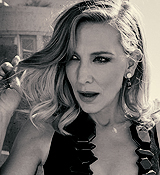 Welcome to Cate Blanchett Fan, your prime resource for all things Cate Blanchett. Here you'll find all the latest news, pictures and information. You may know the Academy Award Winner from movies such as Elizabeth, Blue Jasmine, Carol, The Aviator, Lord of The Rings, Thor: Ragnarok, among many others. We hope you enjoy your stay and have fun!
Welcome to Cate Blanchett Fan, your prime resource for all things Cate Blanchett. Here you'll find all the latest news, pictures and information. You may know the Academy Award Winner from movies such as Elizabeth, Blue Jasmine, Carol, The Aviator, Lord of The Rings, Thor: Ragnarok, among many others. We hope you enjoy your stay and have fun! 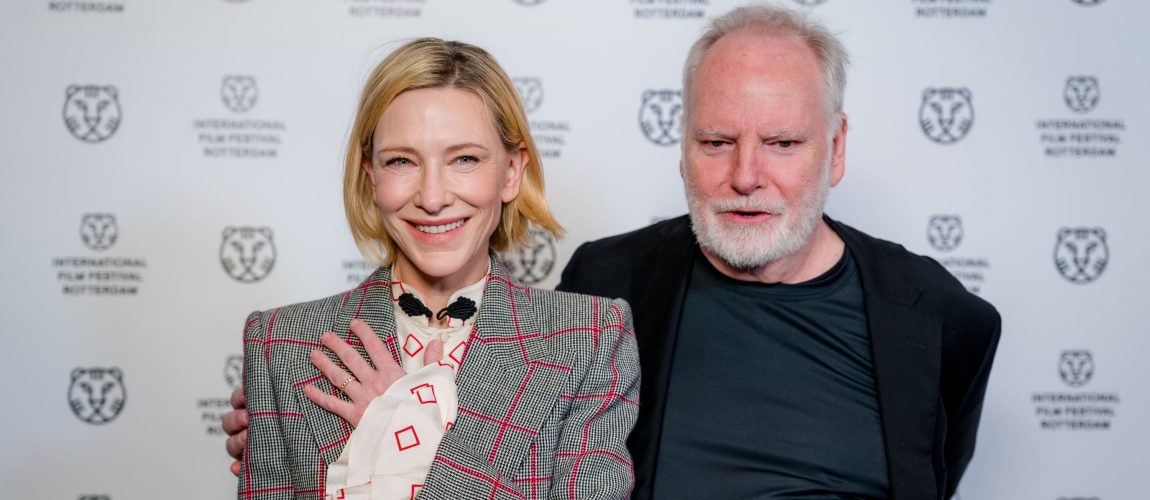

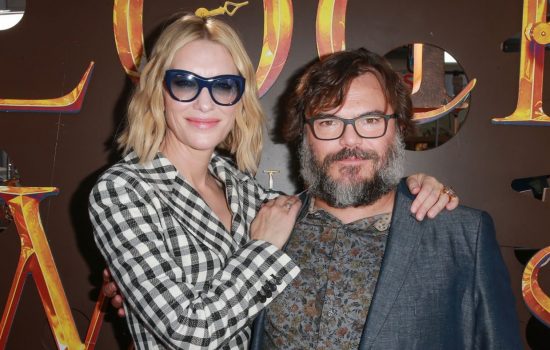

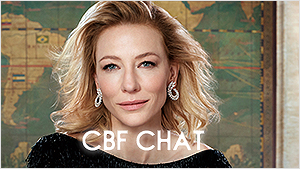
 A Manual for Cleaning Women (202?)
A Manual for Cleaning Women (202?)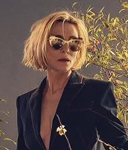 The Seagull (2025)
The Seagull (2025)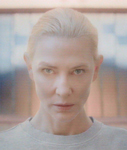 Bozo Over Roses (2025)
Bozo Over Roses (2025) Black Bag (2025)
Black Bag (2025) 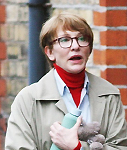 Father Mother Brother Sister (2025)
Father Mother Brother Sister (2025) 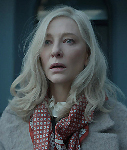 Disclaimer (2024)
Disclaimer (2024) 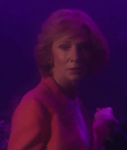 Rumours (2024)
Rumours (2024) 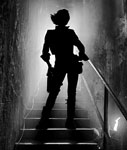 Borderlands (2024)
Borderlands (2024)  The New Boy (2023)
The New Boy (2023) 











